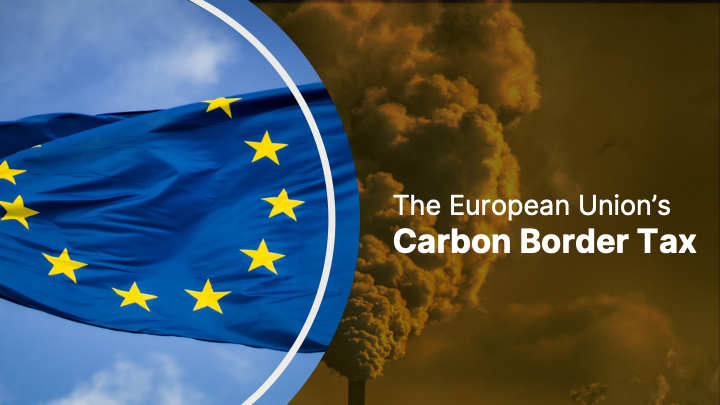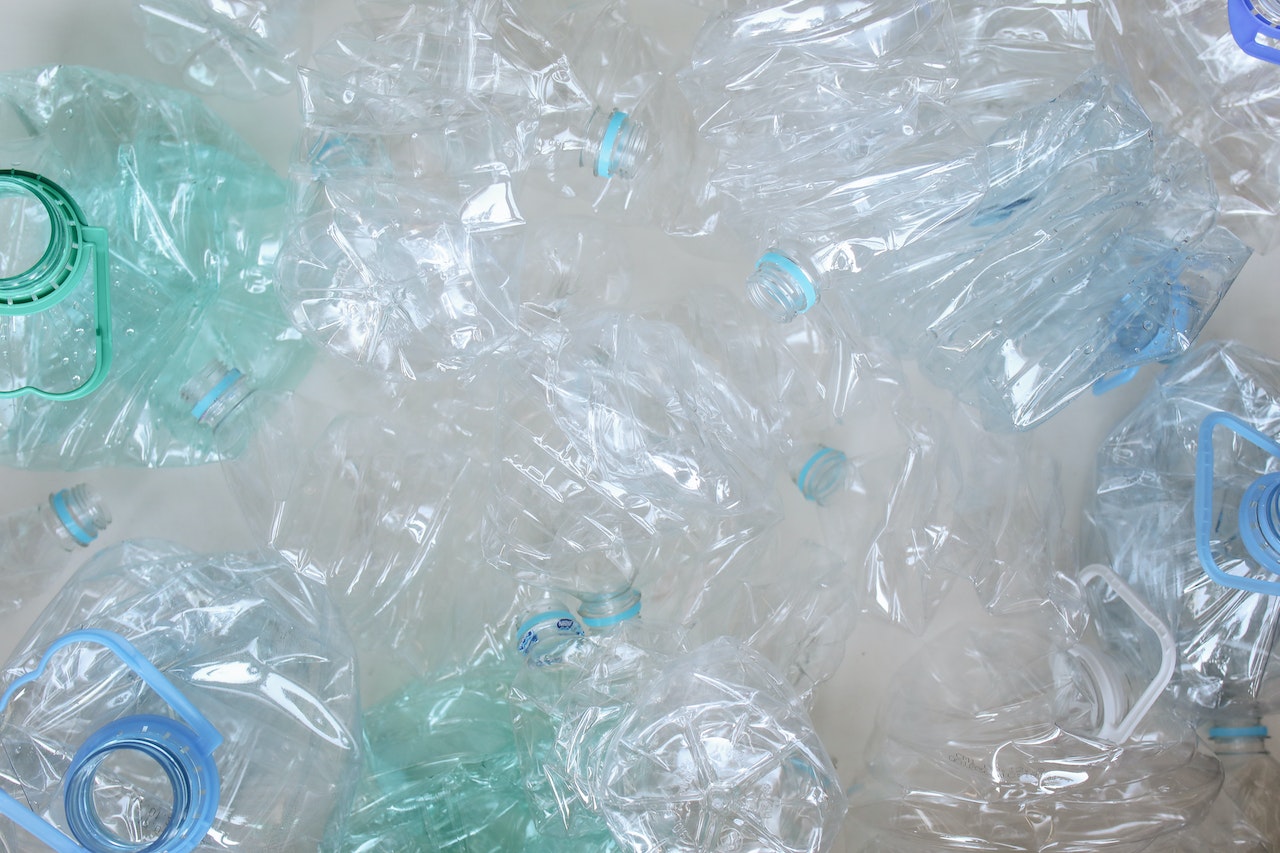By levying a carbon tax on imports tied to emissions, the EU’s intent is clear – make it less expensive for companies to adopt decarbonising technologies than to continue emitting carbon. The ramifications of the Carbon Tax under CBAM will impact companies within EU and the ones that manufacture and supply goods to the countries in the bloc, which is the world’s largest single market. The border tax will increase the cost of carbon intensive goods including steel, aluminium, cement, and chemicals. This increase in price will fall most heavily on the supply chains industrial sectors such as construction, packaging, automotive, and consumer appliances among others. As a result, companies and industries will be forced to decarbonise manufacturing processes to avoid paying the carbon tax and retain competitive advantage.
In July 2021, after longstanding negotiations the European Parliament introduced a climate package called Fit for 55 solidifying EU’s ambition to combat climate change. The package intends to enable a climate-neutral Europe by 2050 as well reduce GHG emissions by 55% by 2030 (from 1990 levels). To realise its goals, EU will need to rely on both tax and non-tax measures. Carbon Border Adjustment Mechanism, or CBAM, is among the several tax and carbon price reforms – and a critical one at that. On December 2022 the Council of the EU and the European Parliament reached an agreement on a provisional and conditional CBAM.
What is CBAM?
Levying a charge on imports for each metric ton of carbon dioxide emitted in the production of the goods, that goes beyond the permissible limit of emissions in EU.
As policies in EU become stricter, and less stringent policies prevail in several non-EU countries, the risk for ‘carbon leakage’ arises. To understand carbon leakage, consider the case of a company that wants to sell fertilizers but does not comply with EU’s environmental standards or does not compensate for the carbon emission beyond the permissible limit, by paying the carbon price. The company instead imports fertilizers from a non-EU nation where environmental regulations are less stringent – this is called carbon leakage. CBAM has been introduced to eradicate this loophole and appropriately price the carbon emitted during the production of carbon intensive goods. This mechanism has the potential to prompt cleaner supply chains and encourage non-EU countries to adopt more environmentally friendly production practices.
CBAM is designed to comply with rules of the World Trade Organisation. CBAM will confirm that a price has been paid for the carbon emissions generated in the production of certain goods imported into the EU. This will ensure the carbon price of imports is equivalent to the carbon price of domestic production, and that the EU’s climate objectives are not undermined.
How will the CBAM be implemented?

At present, the EU employs its own Emissions Trading System (ETS), a “cap and trade” scheme where a limit is placed on the right to emit specified pollutants over an area. Within the cap, companies receive or buy emission allowances in the form of permits, which they can trade as needed. Every year, the “cap” of free carbon permits is lowered. After ramifications under CBAM, businesses that decide to import good produced outside the EU into the EU will have to purchase certificates/permits corresponding to the amount of emissions generated in the production of those goods. The onus to calculate the price of CBAM certificates/permits will lie on the European Commission. The commission will reflect the average weekly price of the ETS auctions, with the CBAM certificates/permits pegged to the ETS. The idea is to ensure that CBAM certificates are priced similar to the price of ETS allowances, while also ensuring that the system remains manageable for the administrative authorities. The carbon border mechanism will be introduced gradually, aligned with the phase-out of free allowances under the EU (ETS) to support the decarbonisation of industry in the jurisdiction.
What industries will see the strongest impact?
Carbon border tax is likely to have major impact on the supply chains of industrial sectors including automotive, packaging, construction, and consumer appliances. The industries rely heavily on steel and aluminium, both of which fall under the initial ambit of the mechanism.
CBAM may also potentially influence end consumers to change their purchasing behaviour, by influencing the cost of goods. This may affect the relative competitiveness of non-EU companies that export these products to the region. Less carbon-intensive producers will pay a lower tax rate, and their products will become more attractive in the EU market.
Additionally, there are consequences for EU-based producers. These businesses will be required to cover all of the carbon costs associated with their output, including exports, as free carbon permits are phased out. As a result, they will likely face price competition in some non-EU markets from local manufacturers who have not covered all of the associated carbon costs. Companies in some EU industries, including steel, have requested a carbon price rebate on exports to alleviate this problem. The European Commission, however, has not agreed.
CBAM holds the potential to make non-EU nations and businesses reassess their own GHG emissions and transition to sustainable practices in order to not lose access to the EU market. The transitional phase particularly provides businesses the time innovate and adapt environment friendly practices.
Phases of Implementation
The reforms will be implemented in a phased manner:
- Over a period of 8 years, CBAM will be phased-in in parallel with the gradual phase out free allowances granted under the EU ETS.
- October 1, 2023 – December 31, 2025 will be the transitional with only quarterly reporting requirements of the greenhouse gas footprint of certain products imported into EU. This would include direct and indirect emissions.
- The initial product scope of CBAM will include the groups of products proposed by the European Commission (cement, fertilizers, iron, steel, aluminium, and electricity), and hydrogen as well as some precursors and a limited number of downstream products. Indirect emissions will, under certain conditions, also be covered.
CBAM will be implemented fully in 2026 with a requirement to purchase certificates to cover the GHG footprint. The expansion of CBAM to cover such products is subject to assessment by the European Commission by the end of the transitional period. The governance of CBAM will rest in the hand of the European Commission. The commission will direct most of the tasks pertaining to its implementation.
Not all is Good
While EU’s CBAM prioritises climate action, it contains several controversial aspects. How will fair accounting for emissions related to the production of imported goods be insured? How will the cost faced by companies in complying with climate regulations be considered – particularly in exporting countries? These are only some of the many concerns. The India, China, the United States, Brazil, South Africa and several others, including least-developed countries, have expressed concern over the carbon border tax.
For EU to be consistent with its WTO commitments, CBAM can only apply to sectors which are also subject to an internal EU carbon price. In practice, this domestic price will be set by the cost for domestic producers purchasing carbon permits through the EU’s ETS. This constraint would limit the CBAM’s scope to sectors currently covered by the ETS. It would prevent the EU from including agriculture in the CBAM, for example. But the scope could expand if the EU develops further internal carbon pricing mechanisms or extends the coverage of the ETS to new sectors, as is currently under discussion in a review of the ETS.
References:
What you should know about carbon-reduction incentive CBAM | World Economic Forum (weforum.org)
A brief explanation of the Carbon Border Adjustment Mechanism (CBAM) – Carbon Market Watch
EU economy and society to meet climate ambitions (europa.eu)
How the EU Carbon Border Tax Will Redefine Value Chains | BCG


